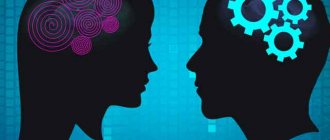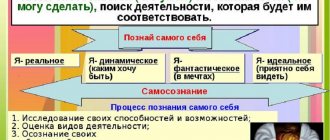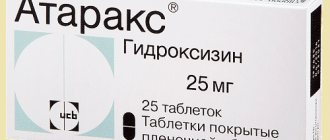Manufacturer, composition, dosage form
Afobazole is produced by a Russian pharmaceutical company. The active ingredient of the drug, aphobazolum, is a selective tranquilizer. It does not affect benzodiazepine receptors, which are responsible for basic mental functions. The medicine stimulates sigma-1 neurons, which regulate emotional state, memory and fine motor skills.
The drug has one release form: flat-cylindrical tablets in dosages of 5 and 10 mg: white with a bevel. Pills are packaged in cell plates or plastic jars. The package contains from 10 to 100 pieces.
Afobazole price, where to buy
The cost of Afobazol tablets depends on which city and which pharmacy chain sells this drug.
How much do tablets cost in Russia? Approximate prices: from 342 to 484 rubles. You can buy tablets in online pharmacies for an average of 360-470 rubles. The price of Afobazole in St. Petersburg is 350-450 rubles, in Moscow pharmacies - 330-460 rubles.
The price of Afobazol in Ukraine varies from 295 (in pharmacies in Lviv and Odessa) to 440 (in some pharmacies in Kyiv and Kharkov) UAH.
- Online pharmacies in RussiaRussia
- Online pharmacies in KazakhstanKazakhstan
ZdravCity
- Afobazole for anxiety and stress 10 mg tab.
60 pcs. JSC "Pharmstandard-Leksredstva" 451 rub. order - Afobazole Retard tab. with prolong. vysv. p/o captivity. 30 mg 20 pcsPharmstandard-Leksredstva OJSC
609 RUR order
Pharmacy Dialogue
- Afobazol tablets 10 mg No. 60FS.-Leksredstva
RUB 447 order
show more
Mechanism of action of Afobazole
The drug belongs to the category of nootropic. It gently stabilizes the activity of specific CNS receptors, restores their sensitivity to inhibitory mediators, and protects nerve cells from damage. Afobazole has a pronounced neuroprotective effect, being both an anti-anxiety and a moderate stimulant. Reduces feelings of fear, emotional stress and irritation, reduces their vegetative manifestations: trembling, breathing problems, dizziness, muscle stiffness. With regular use, it eliminates the signs of post-traumatic stress disorder, restores good mood, improves concentration and performance.
It has been established that the effectiveness of taking Afobazole is higher in people of asthenic character:
- timid;
- overly suspicious;
- those who react painfully to changes in life;
- suffering from mood swings and obsessive-compulsive disorder.
Treatment with the drug does not cause addiction, subsequent withdrawal symptoms, and does not provoke the development of drowsiness, absent-mindedness or physical weakness. After administration, the active substance is quickly absorbed from the stomach into the blood and interacts with plasma proteins. It is excreted unchanged from the body within 1–2 hours.
Afobazole is a safe drug for the treatment of anxiety in general practice
About the article
4179
0
Regular issues of "RMZh" No. 23 dated November 29, 2006 p. 1719
Category: Psychiatry
Author: Avedisova A.S.
For quotation:
Avedisova A.S. Afobazole is a safe drug for the treatment of anxiety in general practice. RMJ. 2006;23:1719.
Anxiety symptoms are among the most common mental phenomena. The breadth of the range of anxiety manifestations - from adaptive anxiety (adjustment disorder) to neurotic anxiety (generalized anxiety disorder - GAD) to severe psychotic states of endogenous origin, accompanied by anxiety disorders, indicates that these symptoms are observed both in the majority of people in everyday life and in patients of general therapeutic and psychiatric practices.
The proximity of the anxiety state to normal human existence (for example, anxiety as the “engine” of evolution and a determining link in survival) causes significant variations in the frequency of these states - from 2-4 to 20% in the population, at the same time showing their extremely high prevalence. The main psychophysiological feature of anxiety is that it is a generalized reaction that covers the entire body. The central element of anxiety is the cognitive component, which is a feeling of diffuse vague fear and anxious anticipation, vague anxiety, uncertainty, tension, difficulty concentrating, anticipation of danger, threat. The substantive uncertainty of the phenomenon of anxiety is subjectively expressed in the feeling of its painfulness, difficult tolerability, accompanied by a feeling of uncertainty and helplessness in the face of danger. Uncertain anxiety manifests itself in concern for many different insignificant reasons, which in the minds of patients acquire an unlawful meaning, promising, with a certain degree of probability, a threat, misfortune to them or their loved ones. A frequent manifestation of the cognitive component of anxiety is worry that the patient or his relative will soon get sick, or that an accident will happen to them, as well as various other worries and apprehensions. Anxiety is accompanied by a feeling of internal tension, hyperesthesia, irritability, anticipation of inevitable troubles, and a feeling of intractability of emerging problems. The second component of anxiety is somato-vegetative, associated with the appearance of a variety of unpleasant and painful sensations in various organs and organ systems (nausea, tachycardia, dry mouth, sweating, breathing disorders and many others, usually associated with hyperreactivity of the autonomic nervous system). These somato-vegetative symptoms, through a “feedback” mechanism, are anxiety-precipitating factors and further increase internal tension and anxiety. The third component of anxiety - behavioral/motor - includes a variety of changes in motor activity: avoidance behavior (for example, stressful events - horror films, bad news, etc.), fussiness, agitation, tremor or, conversely, lethargy. The distinction between anxiety and fear is usually based on the criterion introduced into psychiatry by K. Jaspers. Anxiety is felt out of connection with any stimulus (“free-floating anxiety”), cannot objectify the danger, is pointless and directed to the future; the object of anxiety is a non-specific, “uncertain”, “objectless” danger (repressed into the unconscious). The stronger and more intense the anxiety, the more impaired is a person’s ability to distinguish the subjective from the objective, to adequately recognize and correctly evaluate objects in the external world. In contrast, fear is correlated with a specific stimulus and object, is filled with specific content and is objective. Patients with anxiety are the most frequent visitors to clinics, and when one considers the fact that anxiety symptoms account for approximately one third of all consultations in general practice, one can imagine the enormous amount of time that must be spent on outpatient treatment for such patients. Typical complaints that patients present to general somatic doctors are presented in Table 1. Anxiety, as a rule, acts either as the main component of various psychopathological syndromes, or as the basis on which other psychopathological or psychosomatic disorders are formed. Most often, patients with anxiety, which is an obligatory symptom of adaptation disorder, turn to general practitioners. This disorder (according to ICD-10 diagnostic criteria) occurs during the period of adaptation to a significant life change or stressful life event. A huge number of life situations can cause adaptation disorders accompanied by anxiety. These are those emotional stresses that are in the range of normal human experiences, for example, the birth of a child, starting school, marriage, job loss, divorce, illness, conflicts in the family, at work, exams, illness of a family member, loss of a loved one (grief reaction) , unemployment, change of residence and much more. A particularly important problem is adaptation disorders that occur with anxiety and occur in patients with somatic diseases. Stressful factors in this case may include hospitalization, a new diagnosis, relapse of the disease, diagnostic procedures and operations, and many others (by the way, doctors usually underestimate the role of these stressful events in the patient’s life). Another disorder that general practitioners often “face” with is GAD, in the structure of which anxiety is observed in its most “pure” form. This disorder, in accordance with the ICD-10 classification, is characterized by anxiety that is generalized and persistent, occurring regardless of any specific environmental circumstances (even without their preference), that is, it is “not fixed.” In children, generalized anxiety often manifests itself as recurrent somatic complaints and a need to be reassured. One of the distinctive features of GAD is its course, namely its chronic or wave-like nature (with minor periods of worsening or weakening of existing symptoms). However, when realistically assessing the situation, it should be emphasized that a general practitioner who is faced with the issue of treating anxiety disorders, when choosing therapy, is more likely to rely on the severity of the manifestations of the disease rather than on the classification of diseases. In addition, the speed of decision-making on treatment tactics may be decisive for the prognosis of anxiety. The experience of psychiatric practice acquired during wartime showed that difficulties in adaptation have more favorable consequences in the case of immediate initiation of treatment, including medication. It should be emphasized that therapy is required in cases where the state of anxiety reaches a certain threshold, becoming a maladaptive factor, complicating the patient’s ability to work, or contributing to an exacerbation of the prognosis of concomitant somatic diseases. Several categories of patients with anxiety disorders can be distinguished at an appointment with a therapist and other general specialists who require medication assistance: • patients with anxiety leading to decreased performance (as part of adjustment disorders or GAD); • patients with progressive or chronic somatic diseases whose level of anxiety interferes with appropriate treatment; • patients whose level of anxiety makes diagnostic assessment or diagnostic procedures difficult; • patients with psychosomatic diseases (hypertension and others), in the genesis and course of which anxiety disorders have an important pathogenetic significance; • some patients with somatic diseases, in which stress and anxiety can worsen the course of somatic pathology. The drugs of first choice in the treatment of anxiety have long been benzodiazepine anxiolytics. The rapid onset of anxiolytic action ensured their high effectiveness in anxiety states. However, the downside of this phenomenon was the high risk of abuse and the possibility of complications with addiction phenomena. In this regard, the most common BDZs are limited in terms of use to 2–4 weeks, which is often not enough for the treatment of anxiety disorders. Due to worldwide restrictive guidelines for the use of benzodiazepines, no new anxiolytic has been registered in any country since 1986. If we compare this situation with other psychotropic drugs, the synthesis of which has recently been “experiencing” a rapid rise (for example, over the last 3 years, 3 new antidepressants have been registered, over the last 6 years - 5 new antipsychotics), it is quite obvious that as psychopharmacologists and doctors, Likewise, patients have been waiting for 20 years for the appearance of an innovative anxiolytic, devoid of the undesirable effects of benzodiazepine derivatives. Such a drug, Afobazole, was developed at the Research Institute of Pharmacology of the Russian Academy of Medical Sciences based on the original pharmacogenetic concept of the anxiolytic effect, as well as ideas about a new neurochemical target for the pharmacological correction of emotional stress reactions, and began to be produced by Masterlek JSC. Afobazole is not a benzodiazepine receptor agonist, which is an innovative component of its mechanism of action. At the same time, it prevents the development of membrane-dependent changes in the GABA–benzodiazepine receptor complex, observed during the formation of anxiety and emotional stress reactions and leading to a decrease in the availability of the benzodiazepine receptor site to the corresponding ligand. Afobazole has a combination of distinct anxiolytic, vegetative stabilizing and moderately pronounced activating properties. The anxiolytic effect of Afobazole is not accompanied by hypnosedative effects (sedative effects are detected in Afobazole in doses 40–50 times higher than the ED50 for anxiolytic action). The drug does not have muscle relaxant properties or a negative effect on memory and attention. With its use, drug dependence does not form and withdrawal syndrome does not develop, which allows this drug to be classified as an over-the-counter drug. The spectrum of clinical and pharmacological effects of Afobazole is presented in Figure 1. The therapeutic effect of Afobazole begins to manifest itself from the first days of treatment, reaching a clinically significant level by the end of the second week of therapy. Patients become calmer and more anxious. Unlike benzodiazepines, the effect of which is manifested mainly in the reduction of somatic anxiety, when using Afobazole, not only a reduction of somatic equivalents of anxiety is noted, but also cognitive ones. Therapy with Afobazole is practically not accompanied by side effects. Those that are rarely observed (headaches and nausea) are mildly expressed, do not require special medication correction, drug withdrawal and go away on their own. It should be especially noted that the drug does not cause sedation, which allows patients to maintain their usual activity and contributes to their high compliance. In this regard, Afobazole, unlike benzodiazepines, can be used in persons whose professional activities require the preservation of attention and memory functions, including when driving a car. An important feature of Afobazole is the absence of properties in the drug that determine the development of the “withdrawal” syndrome upon abrupt cessation of treatment. This distinguishes Afobazole from traditional benzodiazepine anxiolytics and allows it to be used for a long time in accordance with the standards for the treatment of generalized anxiety. Despite the fact that Afobazole is already widely used to treat patients with anxiety disorders, its study continues. The fact is that experimental data (Table 2) suggest that the drug has a number of other therapeutic effects that are very important for clinical practice - neuroprotective, antimutagenic, stress-protective, immunomodulatory. Such work is already being carried out in leading Russian institutes and clinics.
Content is licensed under a Creative Commons Attribution 4.0 International License.
Share the article on social networks
Recommend the article to your colleagues
Indications
The drug is prescribed for
- a state of high causeless anxiety;
- asthenic neuroses;
- violations of mental adaptation mechanisms;
- anxiety disorders provoked by serious illnesses, traumatic events and situations;
- somnic disorders with stress causes;
- disorders of the psychoemotional state during PMS in women;
- withdrawal syndrome caused by dependence on nicotine, alcohol;
- impaired concentration under stress.
Depending on the severity of the mental state, the drug is used independently and as part of complex treatment.
Side effects and interactions
In the first days of treatment, a reaction from the nervous system is occasionally recorded:
- mild dizziness;
- drowsiness.
After the body adapts to the drug, they disappear on their own. Exceeding recommended doses does not lead to severe intoxication.
With the simultaneous use of Afobazol and Diazepam, the nootropic effect is enhanced. An antiepileptic effect may be observed when used together with Carbamazepine.








